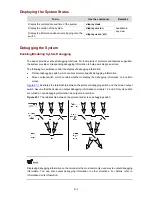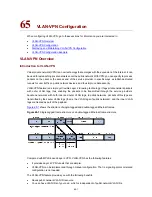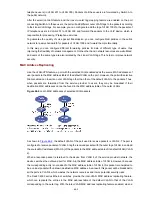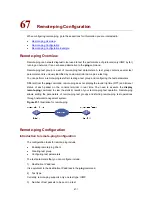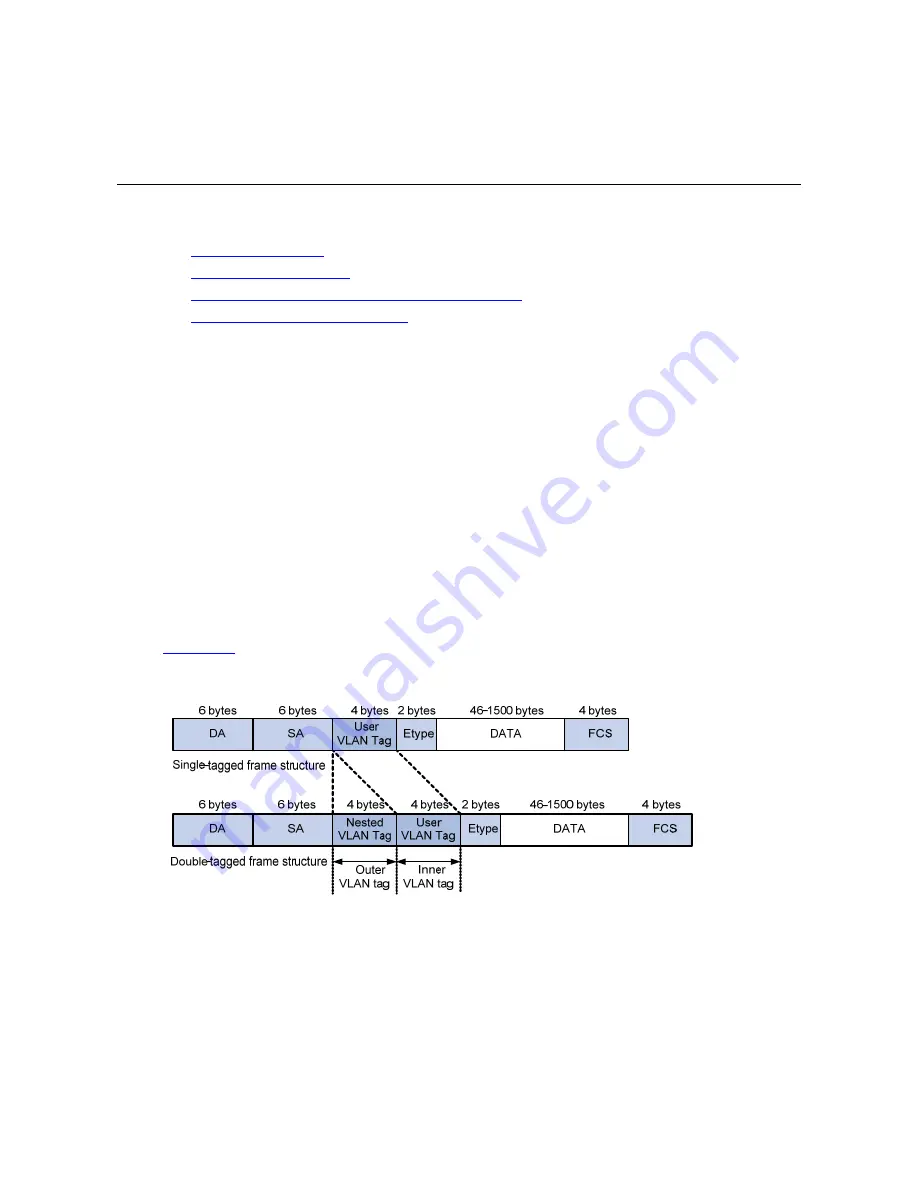
65
VLAN-VPN Configuration
Wh n configuring VLAN-VPN,
e
go to these sections for information you are interested in:
z
VLAN-VPN Overview
z
VLAN-VPN Configuration
Displaying and Maintaining VLAN-VPN Configuration
z
n Example
z
VLAN-VPN Configuratio
Introd
specify to process
ags. In public networks, packets of this type are
he inner VLAN
Figure 65-1
VLAN-VPN Overview
uction to VLAN-VPN
Virtual private network (VPN) is a new technology that emerges with the expansion of the Internet. It can
be used for establishing private networks over the public network. With VPN, you can
packets on the client or the access end of the service provider in specific ways, establish dedicated
tunnels for user traffic on public network devices, and thus improve data security.
VLAN-VPN feature is a simple yet flexible Layer 2 tunneling technology. It tags private network packets
with outer VLAN tags, thus enabling the packets to be transmitted through the service providers’
backbone networks with both inner and outer VLAN t
transmitted by their outer VLAN tags (that is, the VLAN tags of public networks), and t
tags are treated as part of the payload.
shows the structure of single-tagged and double-tagged Ethernet frames.
Figure 65-1
Single-tagged frame structure vs. double-tagged Ethernet frame structure
z
els that are simpler.
n. That is, signaling protocol-related
z
You can have VLAN IDs of your own, which is independent of public network VLAN IDs.
Compared with MPLS-based Layer 2 VPN, VLAN-VPN has the following features:
It provides Layer 2 VPN tunn
z
VLAN-VPN can be implemented through manual configuratio
configuration is not needed.
The VLAN-VPN feature provides you with the following benefits:
z
Saves public network VLAN ID resource.
65-1

